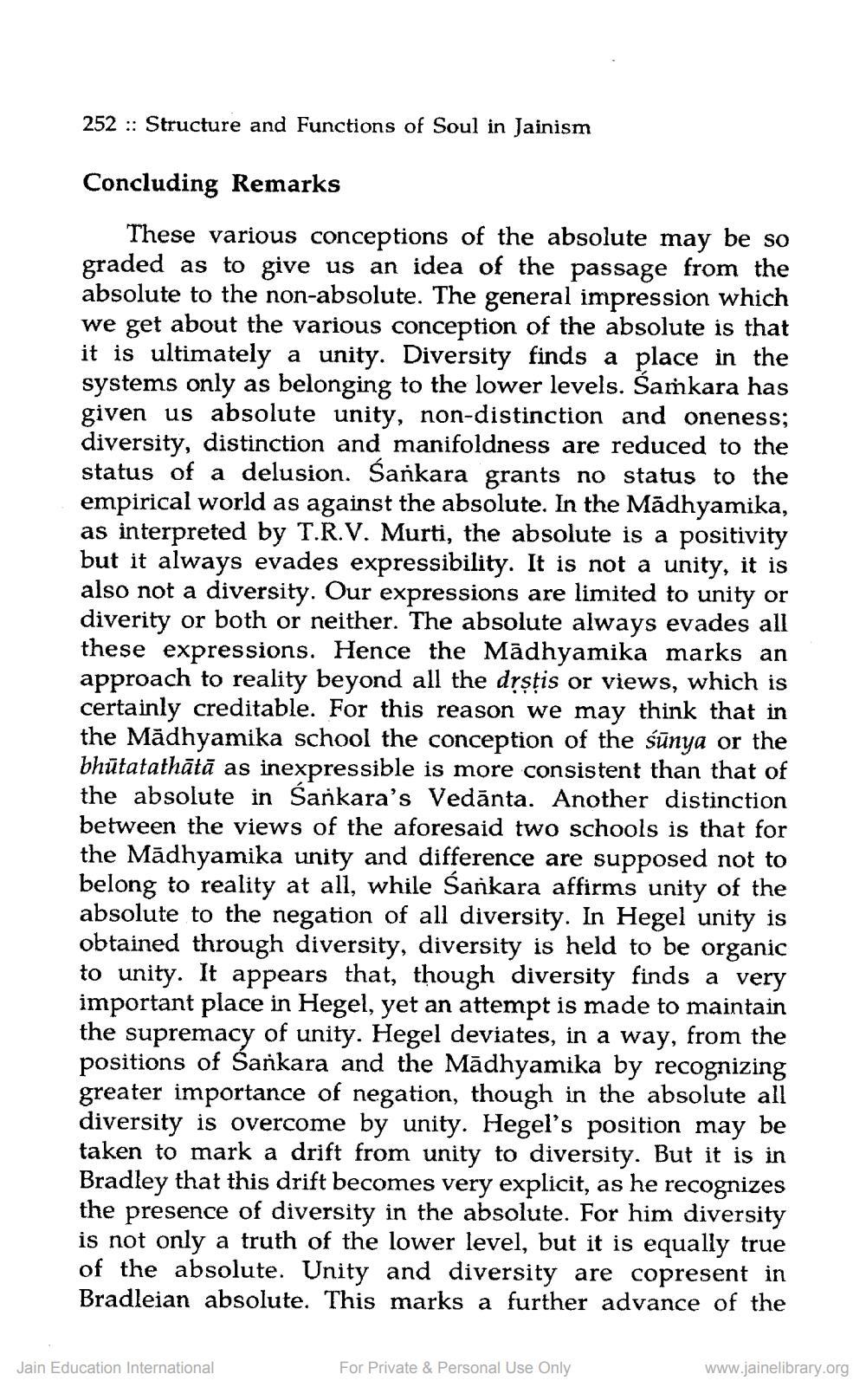________________
252 :: Structure and Functions of Soul in Jainism
Concluding Remarks
These various conceptions of the absolute may be so graded as to give us an idea of the passage from the absolute to the non-absolute. The general impression which we get about the various conception of the absolute is that it is ultimately a unity. Diversity finds a place in the systems only as belonging to the lower levels. Samkara has given us absolute unity, non-distinction and oneness; diversity, distinction and manifoldness are reduced to the status of a delusion. Sankara grants no status to the empirical world as against the absolute. In the Madhyamika, as interpreted by T.R.V. Murti, the absolute is a positivity but it always evades expressibility. It is not a unity, it is also not a diversity. Our expressions are limited to unity or diverity or both or neither. The absolute always evades all these expressions. Hence the Madhyamika marks an approach to reality beyond all the drstis or views, which is certainly creditable. For this reason we may think that in the Mädhyamika school the conception of the sūnya or the bhūtatathātā as inexpressible is more consistent than that of the absolute in Sankara's Vedānta. Another distinction between the views of the aforesaid two schools is that for the Mādhyamika unity and difference are supposed not to belong to reality at all, while Sankara affirms unity of the absolute to the negation of all diversity. In Hegel unity is obtained through diversity, diversity is held to be organic to unity. It appears that, though diversity finds a very important place in Hegel, yet an attempt is made to maintain the supremacy of unity. Hegel deviates, in a way, from the positions of Sankara and the Madhyamika by recognizing greater importance of negation, though in the absolute all diversity is overcome by unity. Hegel's position may be taken to mark a drift from unity to diversity. But it is in Bradley that this drift becomes very explicit, as he recognizes the presence of diversity in the absolute. For him diversity is not only a truth of the lower level, but it is equally true of the absolute. Unity and diversity are copresent in Bradleian absolute. This marks a further advance of the
Jain Education International
For Private & Personal Use Only
www.jainelibrary.org




